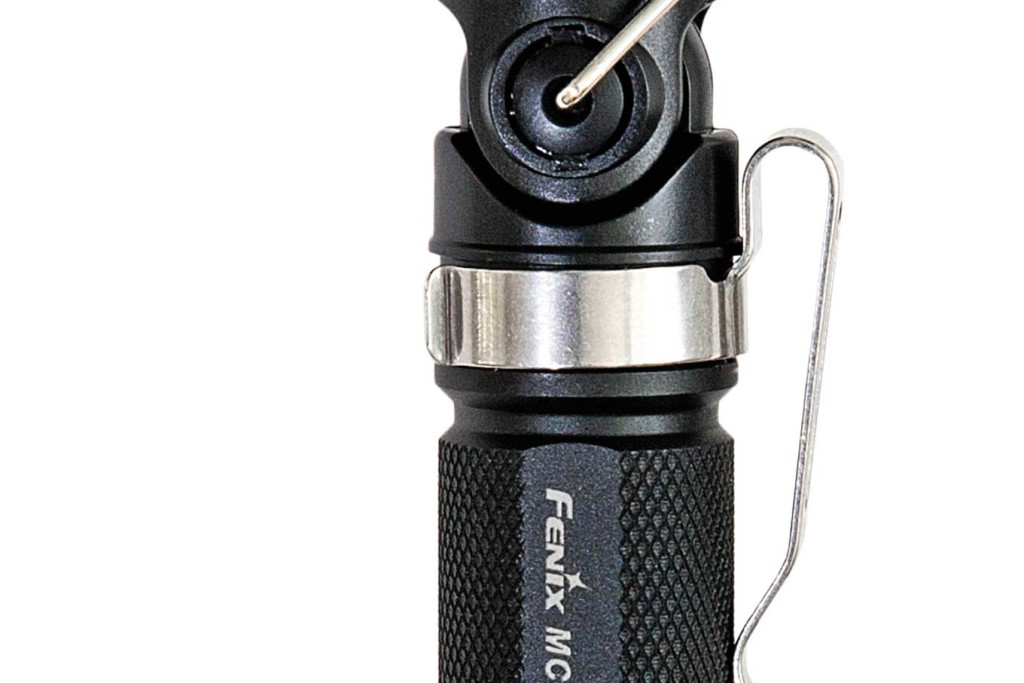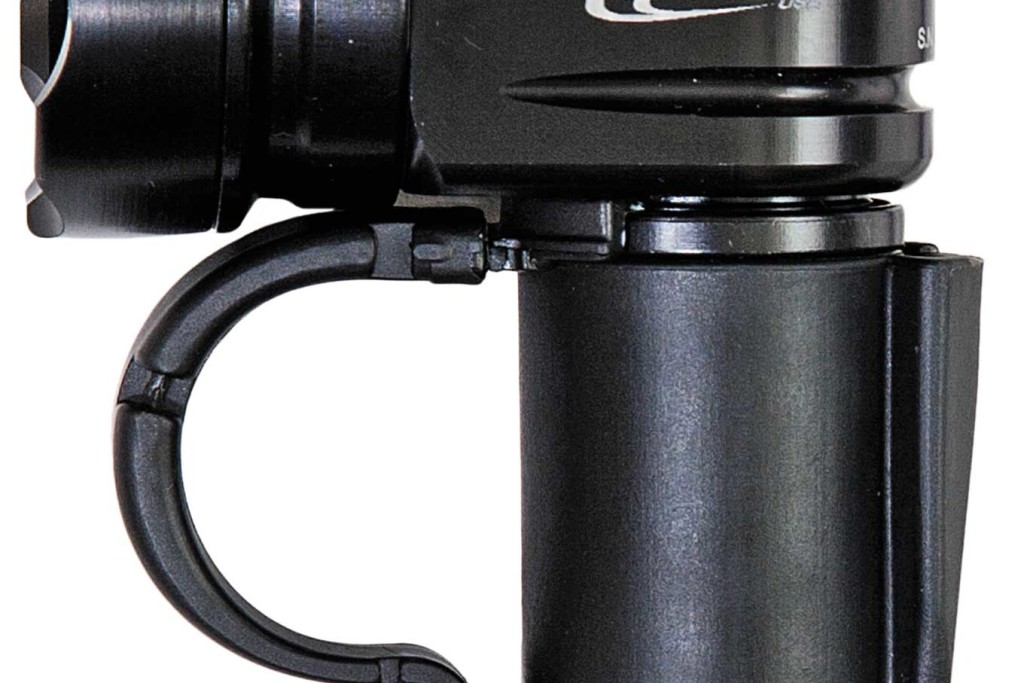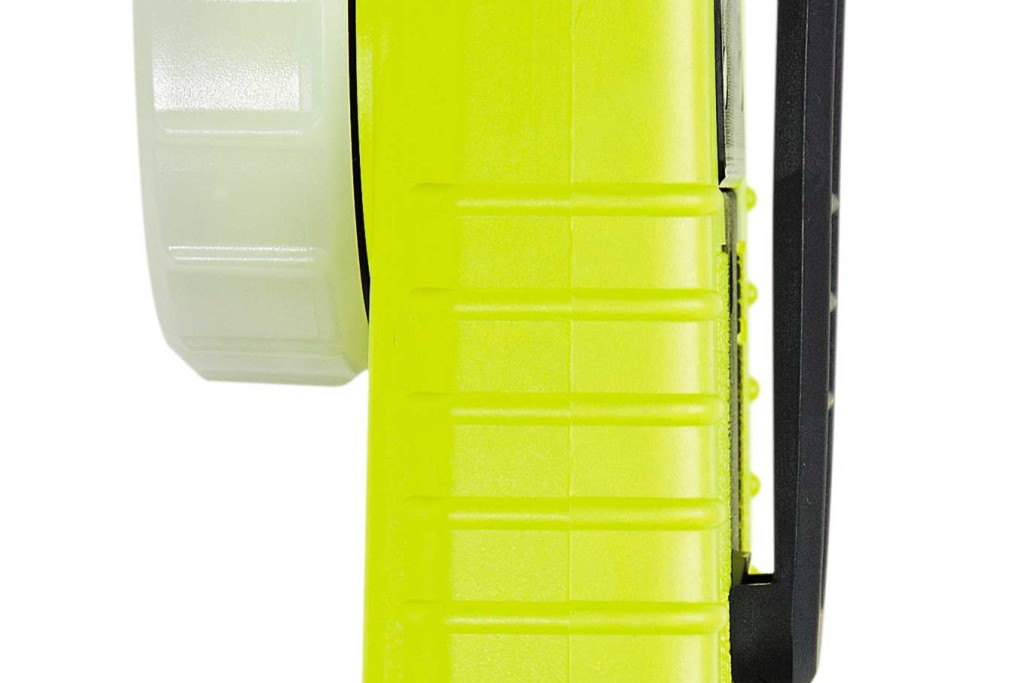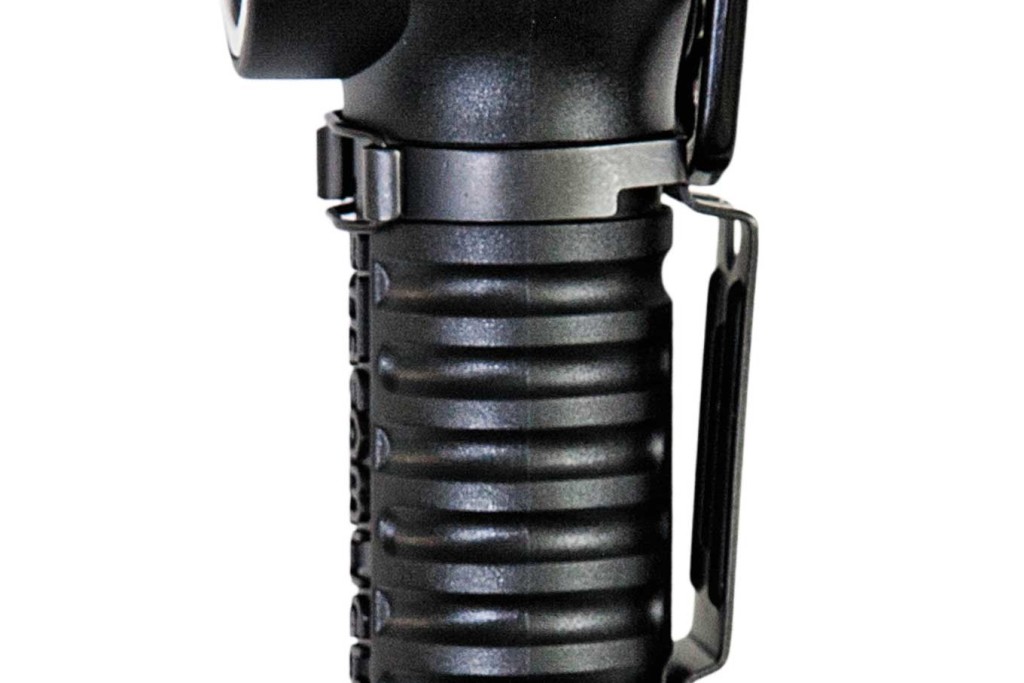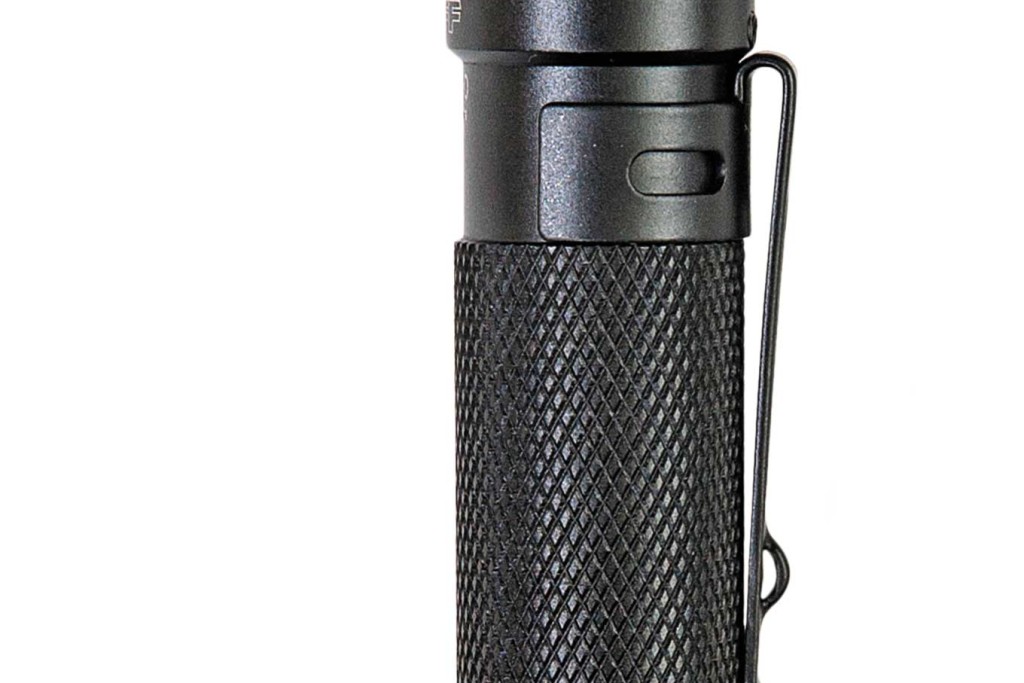Warning
Airguns aren’t toys. Handle them like firearms, and obey the four cardinal safety rules: 1. Treat every gun as if it were loaded. 2. Always point the gun in a safe direction; 3. Keep your finger off the trigger until you’re ready to fire; and 4. Be aware your target’s surroundings.
Mainstream Americans still regard air guns as toys — the BB guns we use to teach our kids when showing them how to shoot and safely handle guns. Most people are astounded when told there are production air guns on the market today that can take down game. More “shock and awe” come when they’re clued into the fact that, way back in 1805, Lewis and Clark used a big-bore repeater air gun on their expedition to open the West, and, around the same time, Austrian troops effectively used big-bore air guns as sniper weapons against Napoleon’s troops.
One such air gun available today is the Wing Shot from Korean maker Sam Yang. This .50-caliber pre-charged pneumatic shotgun is no toy and can do some serious damage. We took it for a spin to see how well it holds up against a couple other big bores out there.
An Underrated Weapon
Before getting into the comparison, let’s take a brief detour to explain the trip down this path. As we mentioned, powerful air guns have been around for a long, long time. However, they weren’t readily available. Today’s hunter has the ability to easily obtain these guns, and we wanted to get the word out. Second, after the initial investment, these guns are inexpensive to shoot. Third, in all but a few states/municipalities they’re not considered firearms and don’t require special purchase requirements or paperwork. Fourth, we’ll talk a bit about their usefulness in a SHTF scenario.

Operation of these air rifles is similar to powder-actuated arms, with the additional step of attaching a high-pressure fill hose from an air source to the male foster fill nipple on the air reservoir of each of these guns. Please note that bicycle pumps and garage-type air compressors aren’t capable of producing anywhere near the required pressures, so you’ll need the proper equipment to charge these guns.
Wing Shot
The Wing Shot is manufactured by Sam Yang Precision Industries, imported by Air Venturi, and sold by Pyramyd Air out of Ohio. Sam Yang has been producing large-bore air guns since 1990. This variant is a single-shot smoothbore capable of firing either proprietary clear plastic shot shells or soft slugs and round ball ammunition. It uses high-pressure air, or HPA, to drive a small clear plastic shell loaded with #6 or #8 shot out of its barrel at considerable velocity. The 3/4-inch-long shells provided with the gun held approximately 120 pellets of #8 shot and 58 pellets of #6 respectively.

On a full charge of 3,000 pounds per square inch, the shooter can expect two to three full-power shots and possibly three additional low-power shots before it’s necessary to top off the reservoir. The Wing Shot provides low- and high-power settings based on how far back the cocking bolt handle is retracted. The bolt resides on the right side of the receiver, resembling that of a modern semi-automatic shotgun, and it cannot be cocked if the safety is on. When the two-stage non-adjustable trigger is pulled, the bolt flies forward and strikes the valve releasing a high-pressure blast of air behind the plastic shotshell.
The Wing Shot’s maximum effective range seems to be about 30 yards with the heavier shot. Air Venturi rates the muzzle velocity of the shot at 1,130 fps. The choke is external and removable, and a good practice is to check that it hasn’t become loose each time you fill the air reservoir. The shot appears to spread out rather quickly, but aftermarket chokes are available. Still, clays cleanly broke using #6 shot at 20 yards on the low-power setting. For those wishing to experiment, Pyramyd Air sells empty plastic shells so you can create your own loads.

The Wing Shot can also fire .50-caliber soft lead balls or conical bullets, but being a smoothbore, don’t expect pinpoint accuracy. Precise aiming isn’t possible due to lack of a rear sight on the stock gun, but a rail is available from Pyramyd Air to mount an optic on the receiver.
When choosing to use the Wing Shot as a slug gun, you’ll want to remove the choke, or accuracy will suffer. Shooting round lead balls weighing 176 grains yielded well over 170 foot-pounds of energy — plenty of power to take out predators. The report of the Wing Shot is relatively mild, although it wouldn’t be considered a backyard shooter by any means. Shooting outdoors wouldn’t necessarily require hearing protection as when firing a powder-burner. However, as with shooting any projectile-firing device, safety glasses are always a must.

Though not a powder-burner, the Wing Shot cleanly broke clays using #6 shot from 20 yards.
Because the Wing Shot can be used as a slug gun, we compared it to a couple of other big-bore lead slingers. The other two were air rifles and, although not an apples-to-apples comparison, we brought them to the range to have some fun. Being air rifles they did have a bit of a leg up on the smoothbore Wing Shot. All three were single-shot air guns and powered by HPA.
AirForce Texan
The AirForce Texan is like the “modern sporting rifle” version of the big bores, all black and devoid of wood furniture. Sleek and minimalist in its design, this .45-caliber single-shot is reminiscent of the AR-15. Its air reservoir is part of the shoulder stock and has a synthetic sleeve to protect the shooter’s cheek from the cold aluminum and to facilitate a good cheek-weld. It’s pressurized to 3,000 psi for full-power shots. The Texan comes without sights, but built-in rails allow for easy mounting of optics; in this case a 4x32mm AirForce scope. A generous rail underneath the barrel provides ample space for bipod or other accessories.

Loading and cocking are accomplished by opening the side lever to expose the chamber. Simply load a .457-caliber pellet and return the side lever to its closed position. This action automatically engages the safety incorporated into the front of the trigger guard. The Texan uses the same foster-type quick-disconnect nipple for filling the reservoir as the other two air guns used in this article.
AirForce Airguns advertises the Texan as capable of developing 500 fpe with excellent accuracy. Shooters can expect two full power shots before needing to top off the reservoir.

This is not a toy. This Texan can fire a .457-caliber pellet up to 1,100 fps.
AirForce Airguns manufactures this beauty entirely in the United States in Fort Worth. Could be why they called it the Texan. Or the name might have derived from the belief that things are just bigger in Texas, and .45-caliber is definitely big for an air rifle.
Western Big Bore Bushback Magnum
Next up is the Western Big Bore Bushbuck Magnum in .45. This American-made air rifle is more traditional looking with a laminated wood stock, and at 10.25 pounds without optics is the behemoth of the group. At a full charge of 4,500 psi, it’s capable of taking any North American game. Also a single-shot, it throws heavier slugs out of its lengthy 30-inch tube and is advertised as obtaining up to 600 fpe!
It loads by a conventional bolt-action, and power level is determined by how far back the bolt is pulled when cocking — first click is low and second is high, just like with the Wing Shot.

At full power, the shooter can expect two shots before needing to top off the air reservoir. For smaller quarry approximately six low-power shots would be feasible. There’s no safety on this model other than the one betwixt your ears. An MTC 5-20x50mm scope mounted on the Bushbuck assisted in highly accurate shots from the bench. Precision Airgun Distributors announced a shortened version, simply called the Bushbuck, for easier carrying in the field. At 6 inches shorter, about 100 fps in velocity is lost, but lighter weight and maneuverability make up for it.
As the Texan and WBB Bushbuck Magnum are rifled arms, a hunter will be able to reach out much further than with the Wing Shot. Effective range on a coyote with the Texan has been recorded to be 200-plus yards. The Bushbuck has been used beyond that range in air rifle bench rest competitions. Ear protection is definitely a must with both of them. As with the other air arms described here, there’s little recoil to speak of.
SHTF Worthy?
So, should you consider adding powerful air rifles to your bug-out bag or emergency kit? What about keeping one or more in your mountain or desert hideaway? No one would likely suggest keeping one of these single-shot big bores around as a self-defense weapon in a SHTF scenario, though having something is better than having no lead launcher at all. In terms of putting food on the table, though, these guns definitely fit the bill. Their reduced sound signature and lack of smoke and flame when fired give them a leg up on firearms when you want to keep a low profile.
Low cost per shot means you can practice — a lot. You can even dry-fire practice with most PCP air guns without harm. All that extra shooting doesn’t mean extra cleaning though, as air guns generally require less cleaning and maintenance than powder-burners.

Still think of air guns as toys? These .45-cal pellets should change your mind.
Should you find yourself living off the land without electricity and unable to have tanks filled by a dive shop, a hand pump could be used to keep your guns filled with air. However, if you’re serious about air guns in your survival planning, check into a gasoline powered HPA compressor.
Lastly, for most Americans, you can own as many as you’d like without any paperwork hassles.
Conclusion
We’re fortunate that it’s still a free market in this country for high-power air guns, which leads to more innovation and selection for the consumer. Some manufacturers are even coming out with big-bore pistols, as well. Most other countries with a large number of air gun enthusiasts strictly limit the foot-pounds of energy the guns can develop. Big-bore air guns aren’t a new invention, but are even more relevant today, especially in light of the self-sufficiency movement in this country. Modern air guns are accurate, well made, and fun to shoot since they don’t punish with recoil. These air guns fill a niche that’s growing among American shooters.
| Sam Yang/Air Venturi Wing Shot | Airforce Texan | Western Big Bore Bushbuck | |
|---|
| Caliber | .50 smoothbore | .457 | .452 |
| Stock | Wood (Sepatia, or Indonesian Walnut) | Synthetic | Laminated wood |
| Action | Single shot
Low & High power settings | Single shot, side lever
Can be tuned for valve hold open | Single shot, bolt action
Low & High power settings |
| Trigger | Two-stage, non-adjustable
5 pounds, 7 ounces pull weight | Two-stage, adjustable for position
2 pounds, 13 ounces pull weight | Single Stage
3 pounds, 1 ounce pull weight |
| Powerplant | Pre-charged pneumatic (HPA)
3,000 psi | Pre-charged (HPA)
3,000 psi | Pre-charged (HPA)
4,500 psi |
| Sights | Front bead | None. Built-in rail system for optics mounting | None. Built-in Picatinny rails for optics mounting |
| Barrel length | 22.5 inches | 34 inches | 30 inches |
| Overall Length | 43 inches | 48 inches | 49.5 inches |
| Weight | 7.25 pounds | 7.65 pounds | 10.25 pounds |
| MSRP | $750 | $1,054 | $1,895 |
| Manufacturer | Sam Yang Precision Industries Co.
Korea | Airforce Airguns
Ft. Worth, Texas (American made) | Precision Airgun Distributors
Arizona (American made) |
| Warrranty | One year limited | Lifetime | Limited Lifetime |
| Supplier | Air Venturi via Pyramyd Air Salon, Ohio | Airforce Airguns | Airguns of Arizona |
| URL | www.pyramydair.com | www.airforceairguns.com | www.airgunsofarizona.com |
Mistakes to Avoid
- Using gases other than dry air, nitrogen, or CO2: This should go without saying, but always follow the manufacturer’s directions. Also, if you attempt to use oxygen, well, it’s been nice knowin’ ya…
- Leaving them in hot environments: Can you say, “Air under tremendous pressure in a sealed vessel?” Avoid leaving air guns or tanks in a car on a hot, sunny day.
- Using lead projectiles that are too hard of an alloy: They need to be soft enough that the blast of air expands the base of the pellet for a good bore seal.
- Using any type of petroleum-distillate-based products: These guns rely on rubber O-rings and seals that don’t play well with petroleum products. Stick with silicone-based products for lubrication.
- Overfilling the air reservoir: This leads to a condition known as “valve lock,” which can eventually lead to seal failure.
- Using a damaged or deeply scratched air tank or reservoir: HPA guns are a different breed from the air guns you grew up with and demand respect. Serious injuries can occur, and we’re not talking about shooting your eye out. Tanks and reservoirs should be hydrostatically tested every three to five years. Carbon-fiber tanks have a shelf life of 15 years.
- Directly comparing them against firearms: The velocities are lower than what can be generated by gunpowder, and these guns kill game animal via penetrating wounds and blood loss rather than high- velocity shock and large wound channels. Work on your stalking skills because you won’t be taking 500-yard shots with these air rifles.
- Not respecting them as weapons: Treat air guns as you would any of your other high-quality firearms, lest you or someone around you suffer an unfortunate injury or worse.
About the Author
Gordon D. Smith, like a lot of American guys, grew up shooting Daisy and Crosman air guns. Some twisted wiring in his brain never let him grow out of the fascination of propelling projectiles by compressed air or CO2. While he did graduate to powder-actuated toys for big boys, he has been writing about air guns for the past five years for Airgun Hobbyist magazine. His interests have led him to investigate how air guns might fit into various aspects of the prepper lifestyle.
Sources
Air Tanks for Sale Inc.
www.airtanksforsale.com
Hunters Supply Cast Bullets
www.hunters-supply.com
Thompson Targets
www.thompsontarget.com
More From Issue 15
Don’t miss essential survival insights—sign up for Recoil Offgrid’s free newsletter today.
Read articles from the next issue of Recoil Offgrid: Issue 16
Read articles from the previous issue of Recoil Offgrid: Issue 14
Check out our sister publications on the web: Recoil | Gun Digest | Blade
Editor’s Note: This article has been modified from its original print version for the web.




















